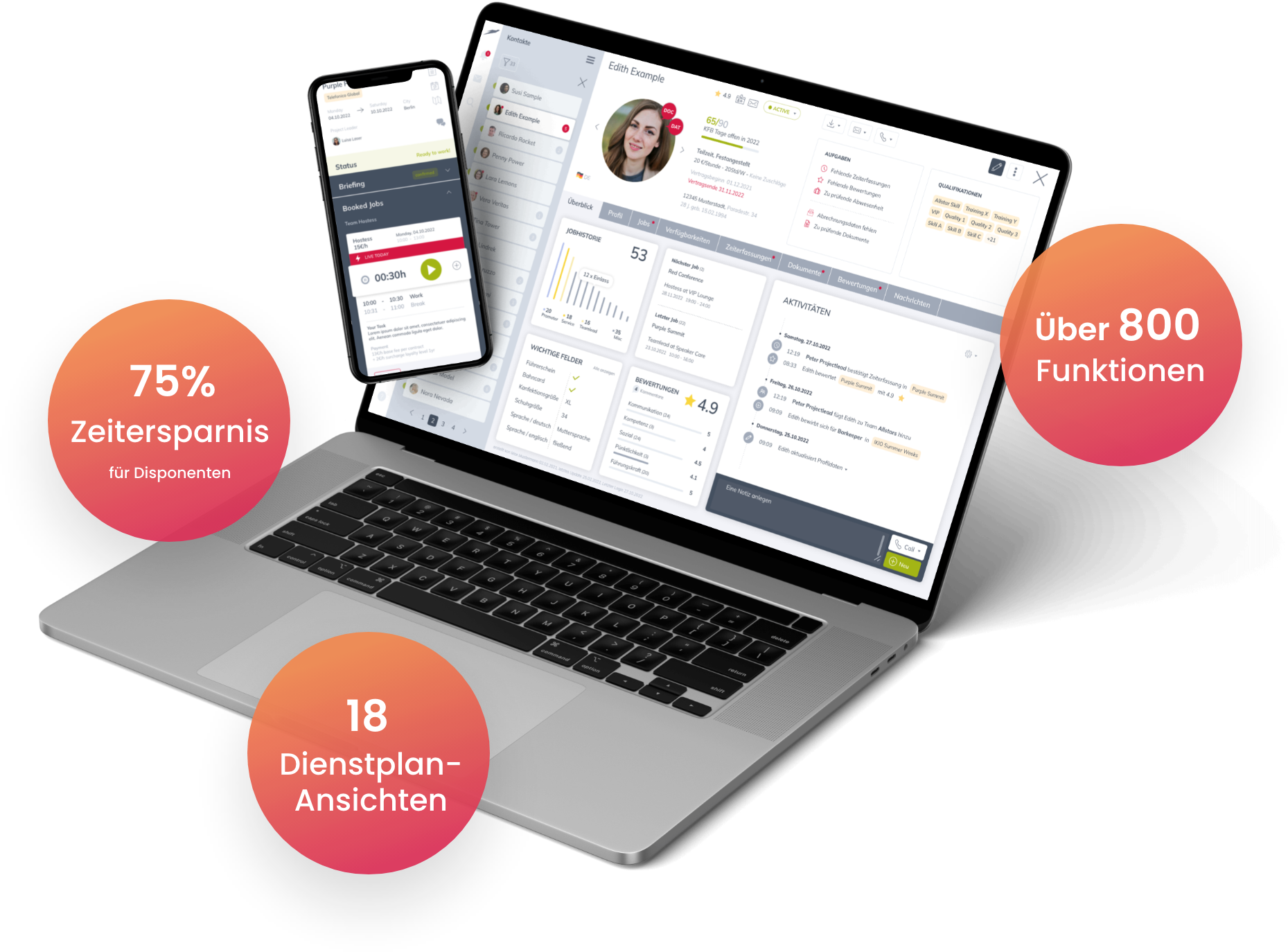Staff scheduling: What needs to be considered?
There are a few things to bear in mind when it comes to personnel resource planning (PEP for short), as it helps to optimize workflows and processes within your departments and the company as a whole.
In short, the PEP serves to prevent staff shortages or overcapacity. In the rest of the article, we clarify further questions about workforce scheduling.
What is meant by personnel resource planning
Generally speaking, personnel planning ensures that the demand for employees in a company is optimally covered. Staff scheduling is used to estimate how much capacity is required in each department so that there are always enough employees with the right skills available.
HR managers must therefore ensure that the positions are filled with exactly the right employees when planning staff deployment. You have deployed your workforce perfectly if the cost-benefit ratio is optimal from the company’s perspective. In this way, the interest and potential of employees is also taken into account and strengthened.
This is no easy task, as there are always events that can complicate personnel deployment planning. These can include the following:
- Popular vacation times
- High incidence of illness
- Fluctuating order quantities
- Seasonal fluctuations (summer slump)
- Supply bottlenecks
This shows us that PEP must act flexibly, as numerous internal and external influences can affect planning at any time.
What is the purpose of workforce scheduling?
In general, it can be said from the previous information that the PEP is the basis for important personnel decisions. This is because it is not always just about simply filling positions, but also about transferring entire departments to another department or even promotions.
From all this knowledge, it can now be said that personnel resource planning flows into the following areas:
- Recruiting
- Personnel planning
- Personnel controlling
- Personnel development
- Working time planning
What are the tasks of workforce scheduling?
Qualitative PEP
The main task is to cover the personnel requirements and to fill the positions correctly with the appropriate employees. In order to complete this task, the HR manager must know the requirements profile in detail, analyze the employees and match them with the job profile.
This comparison is also referred to as qualitative personnel resource planning.
Quantitative PEP
There is also the so-called quantitative PEP, whereby the actual number of employees is compared with the company’s target number. The aim here is to ensure that the company has sufficient staff for its day-to-day business and its corporate goals. But also where these can be implemented and costs reduced with fewer staff.
Time-based personnel deployment planning
This type of personnel deployment planning involves taking seasonal fluctuations into account. For example, the summer slump usually occurs in the summer, when many team members take vacation and fewer orders come in.
In the winter months of November, December and January, however, the order situation often booms again. These conditions must clearly be taken into account in the PEP.
Shift planning
Another task of workforce scheduling is shift planning. This involves determining which employee works when, and recording working hours is also important here. Personalized duty rosters are created and provide a precise overview of who works when, where and for how long.
You can create your roster with Teamhero particularly easily & in just a few clicks.
We have summarized the most important tasks of workforce scheduling for you below:
Tasks:
- Qualitative PEP: Analyze employees according to their skills & match them with the job profile
- Quantitative PEP: Sufficient personnel & cost planning
- Time-based personnel deployment planning
- Shift planning
Objectives of personnel resource planning
The objectives of workforce scheduling can be summarized as follows:
Goals:
- Filling vacancies
- Increasing the performance of corporate goals
- Increase productivity with the right choice of employees
- Plan flexibly and, above all, with foresight
The main objective is to find the ideal staffing with qualified specialists. Further objectives are derived from this goal.
If you have found the right colleagues for a task, this can also have a positive effect on the company’s performance. Even if a team member is very satisfied with their job, this increases their productivity, which is also good for the company.
Flexibility is also very important here, as redundancies, restructuring and any fluctuations in the order situation must be taken into account.
Planning ahead also means that new positions can be filled internally. If an employee goes on parental leave, for example, a new colleague does not necessarily have to be found. This is because recruiting new staff is usually associated with high costs.
Tips for simple workforce scheduling
Here we briefly summarize 4 tips that will show you what you need to consider when planning staff deployment:
1. work with software such as Teamhero
Working with software such as Teamhero offers you numerous advantages. You can use it to create and maintain staff scheduling in just a few simple steps.
You are not dependent on time, place or device and can access all your data anytime and anywhere.
In the future, you can do without annoying Excel spreadsheets and always have the latest version of the planning on the screen in front of you: You can find more advantages in our big Teamhero vs. Excel comparison.
2. flexibility
Flexible and forward-looking planning is the be-all and end-all of PEP. You need to anticipate the unforeseeable and include it in your planning.
3. communication
Communication also plays an important role in this area. It must be clear to everyone what they have to do and when. Transparency, clarity and speed are particularly advantageous here.
You probably don’t want to encounter annoyance and resistance after creating the duty roster, so let your employees indicate their availability themselves. If you employ students and pupils, for example, they can indicate in the calendar when they are free and when they have an exam or lecture.
4. reflect
You should not only be busy planning, but also take a look at the past. Ask yourself questions such as:
- What went wrong?
- Which employees often want to swap shifts?
- What are the reasons for shift changes?
- Are there any recurring problems?
Find out exactly where the problems lie and plan for them in the following months.

























